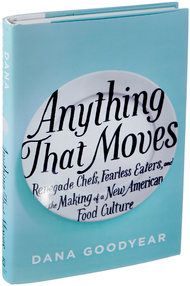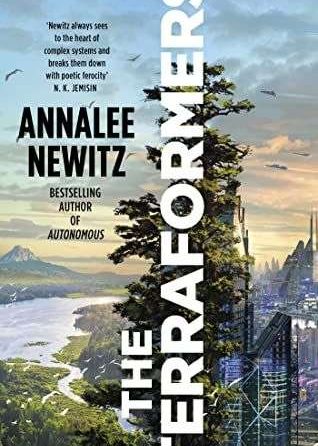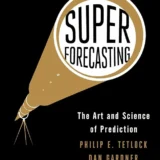
In addition to being a writer, a mother, a hideously incompetent balcony gardener, etc., I am a massive natural foods junkie. My family can testify to the longueurs of the No Seed Oils campaign, the No Sugar auto-da-fé, and the Brown Rice blitzkrieg. (That one didn’t last long. Word to the wise, do not try coming between a Japanese person and their white rice.) Someone once said that most writers are either cooks or drunks. I do from time to time attempt to prove that you can be both, but fortunately there haven’t been many weeks that bad lately, so I’ve been hitting the chopping board rather than the chardonnay.
And, when I read, I notice what people are eating. This is one of those little clues that can tell you a lot about how a fictional world is constructed and how its author sees it. Think of those mouthwatering feasts in ASOIAF, for example.*
 I recently tore through the first three novels of James S.A. Corey’s The Expanse series. Crikey! Best space opera I’ve read since the last Peter F. Hamilton came out. Go get it if you haven’t read it yet. At least one half of Corey (a pseudonym for the writing team of Daniel Abraham and Ty Franck) has obviously been learning from the master of twisty-turny narratives. Corey’s 22nd-century solar system, however, is a bleak place. One telling symbol of that bleakness are the water and food freighters that haul, respectively, chunks of ice and the products of agridomes on Jupiter’s moons to the human colonies in the inner solar system.
I recently tore through the first three novels of James S.A. Corey’s The Expanse series. Crikey! Best space opera I’ve read since the last Peter F. Hamilton came out. Go get it if you haven’t read it yet. At least one half of Corey (a pseudonym for the writing team of Daniel Abraham and Ty Franck) has obviously been learning from the master of twisty-turny narratives. Corey’s 22nd-century solar system, however, is a bleak place. One telling symbol of that bleakness are the water and food freighters that haul, respectively, chunks of ice and the products of agridomes on Jupiter’s moons to the human colonies in the inner solar system.
This is a change from food as an artificial substance. One does sometimes wonder: why does everyone in the future seem to live on algae? Corey (I’m just gonna call them that) has obviously wondered the same thing and come up with this alternate scenario. In Caliban’s War, a main character, Praxidike Meng, is an agricultural chemist on Ganymede.
The cutting edge of low-resource agricultural botany, the Glycine kenon, a type of soybean so heavily modified it was an entirely new species, represented the last eight years of his life. … He could see the eight subtly different strains of engineers chloroplasts in the fields, each one trying to spin out the most protein per photon.
In the 22nd century there are still workaholics soybeans. Like I said, it’s a bleak future.
But better soybeans than algae, right? Right? And hey, there are always trade-offs. You want the stars, you gotta sacrifice fine dinin’. You can’t have an interstellar empire and headcheese and liverwurst and nukazuke and basashi,** too. Dream big, kid, and eat like a welfare baby.
 There’s a new book out called Anything That Moves, by Dana Goodyear, who writes for the New Yorker. I haven’t read it yet, but it purportedly documents “a new American cuisine.”
There’s a new book out called Anything That Moves, by Dana Goodyear, who writes for the New Yorker. I haven’t read it yet, but it purportedly documents “a new American cuisine.”
Animals never before considered or long since forgotten are emerging as delicacies. Parts that used to be for scrap are centerpieces. Ash and hay are fashionable ingredients, and you pay handsomely to breathe flavored air. Going out to a nice dinner now often precipitates a confrontation with a fundamental question: Is that food?
It’s always annoying to find out that one is part of the zeitgeist. I haven’t tried ash or hay yet, but I just made a batch of brawn with pig’s trotters,*** and my family is regularly subjected to liver, oxtails, and gizzards. Anyway, my point is that this feels futuristic. The food culture of nose-to-tail and roots-to-flowers would suit an interstellar empire (where there were other planets with things living on them), or even an inhabited solar system where “waste not, want not” (mottai nai) becomes a survival imperative. It would also make a lot of sense health-wise for space-faring humans who are likely to be deficient in vital minerals. Consider the famously long-lived Okinawans; this is how they ate. Also bear in mind that in space, deep-freezing is free.
I wouldn’t go so far yet as to place a bet that this is how people in the future will eat. After all, the post-scarcity economy is still a possibility, as is industrial food-in-vats of the kind I talk about here. But bags I this bit of worldbuilding for my next series of novels! The petrochemical industry can have the algae, and as for the soybeans…well, the pigs will need to eat.
****
*If you have a spare hour or two and as are huge a GRRM fan as I am, check out this thread on the Westeros forum and vanish down the rabbit hole of the symbology of every food item in ASOIAF, from persimmons to lamprey.
**Basashi: I linked to the Japanese Wikipedia page here for a reason. If you click “English” on the left-hand side of the page, it takes you not to a page for horsemeat sashimi, but to a page titled “Horse Slaughter”! Don’t let anyone tell you Wikipedia is apolitical.
***Pig’s trotters: Wowie! These are excellent cuts! Two days’ worth of protein and a nice broth for the equivalent of $6, which means a lot to a starving writer. Could the “new American cuisine” that Goodyear breathlessly (and condescendingly, if I know my New Yorker) documents be no more or less than a knock-on effect of high unemployment rates?









